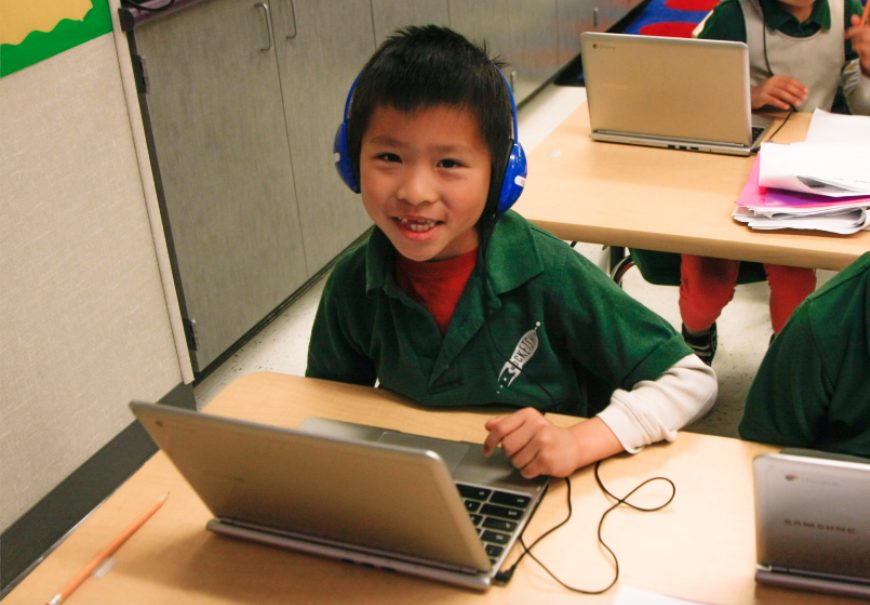
The Student’s Perspective on EdTech
by Stephen Pham, Teacher, Sí Se Puede Academy
After a long school year of planning, teaching and more, the month of June has arrived – when we not only take time away from school to rejuvenate, but we also reflect on the past year. Though I will do a lot of reflecting myself, I decided I would get some help from those with the most important opinions of all – the students.
This past year, I’ve gone through several iterations of classroom models, trying out different classroom structures and various education technology tools that might meet the needs of my students and classroom. Through these trials and experiences, my students and I have learned a lot – both about math and how to best learn math. We’ve compared the different modes of learning, determining what works well and what doesn’t work as well. At the end of the year, here is what my students have to say.
Josiah, a 5th grade student who is very bright in math, loves using technology to learn at his own pace. “I like that it helps me a lot. I can work independently.” When asked to compare using technology to learn versus a regular classroom environment, he feels that using technology “is better because it helps you and gives you hints.”
Some students really enjoy that they don’t have to use the standard pencil and paper format. Genesis, another 5th grader, likes using technology because “it doesn’t include writing and you [just] have to swipe and press.” And even if students do want to show work, students like Lily love the option of “show[ing] work on our whiteboards.” Technology opens up many doors in terms of practice, as students get to manipulate, visualize and interact with their learning and practice in enhanced ways.
The most common theme of all, though, is using the web as a resource really enhances learning. Kimberly finds “you can search stuff up and you can get apps that help you learn.” Many programs, such as Khan Academy and even the simple yet vast Google search engine, “help us by having instruction and images of how to do things,” says Lily. Students like Ashley find the World Wide Web serves as more than a tool to learn and practice math – it “helps understand what [other] things are and how we use them.”
Though many students will frankly say they love using technology for media uses, it seems students also appreciate the use of technology in the classroom. Altogether, technology serves as a strong option for personalizing learning, giving students a personalized path to reach their academic goals.
Follow Stephen on Twitter @stephenqpham.
Stephen is a fifth grade STEM teacher at Sí Se Puede Academy and a STEM Integration Associate for Rocketship’s network Achievement Team. Stephen is also a part of the BetterLesson Blended Learning Master Teacher Project. He grew up in Southern California and attended the University of California, Los Angeles where he studied biophysics. After graduating, Stephen joined Teach for America and has been teaching at Rocketship ever since, now going into his third year. In his practice, Stephen leverages a blended learning approach to teach math and science, getting students to apply their mathematical reasoning in a variety of ways. Stephen lives in San Francisco and enjoys spending time outdoors with friends.
Published on June 15, 2015
Read more stories about: Personalized Learning.


